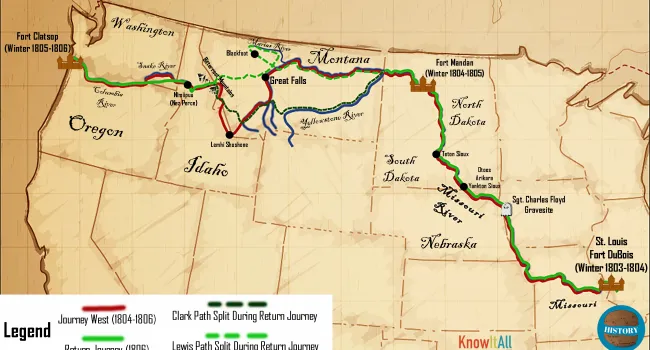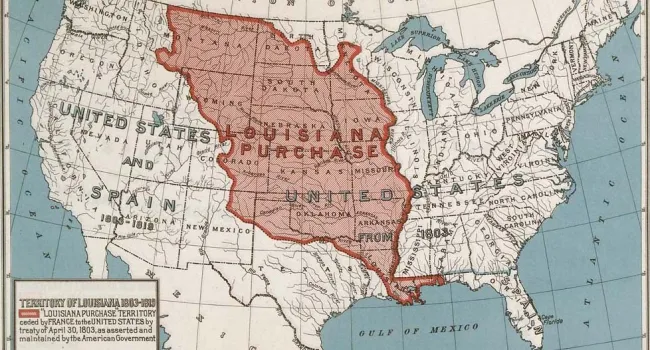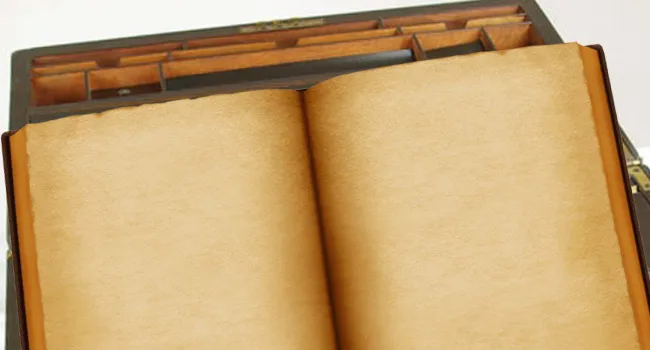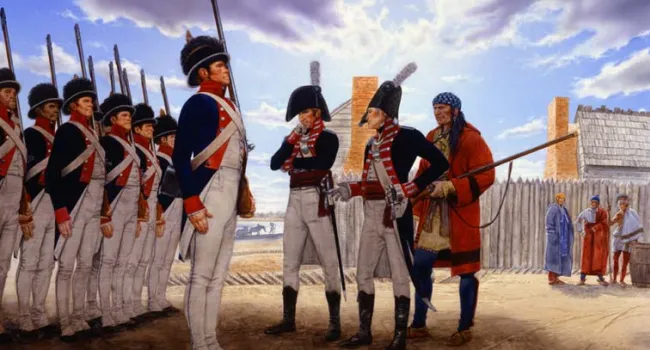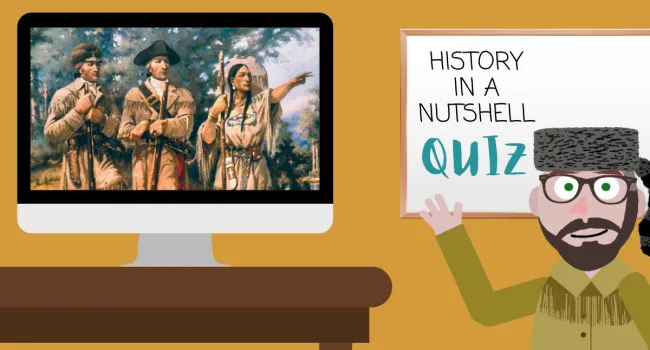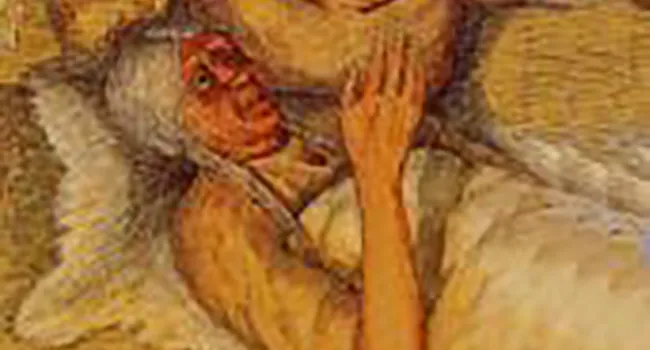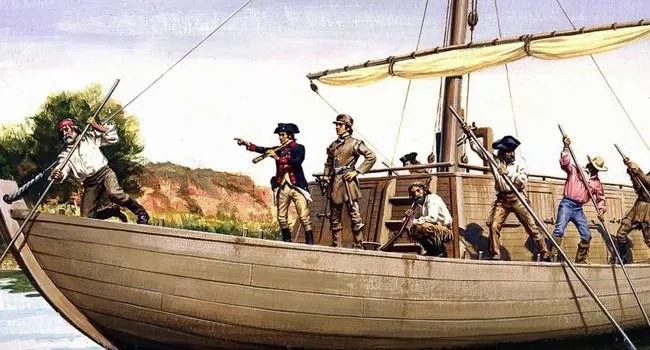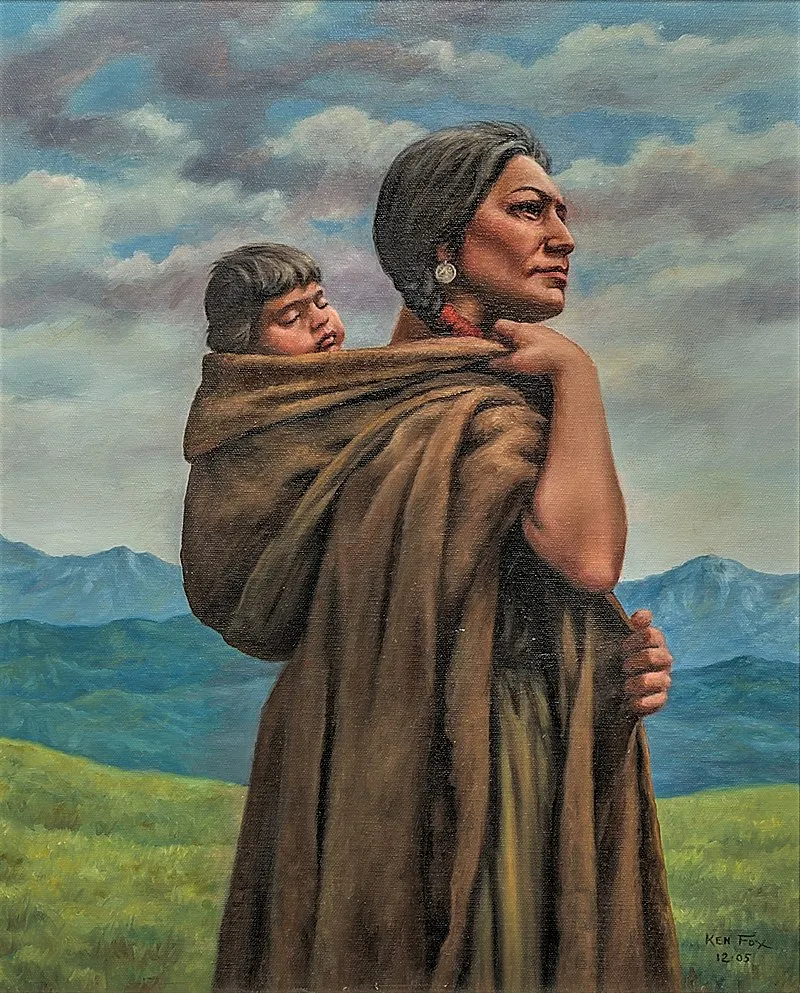
Note for educators regarding Sacagawea: According to scholars, the pronunciation of Sacagawea as Sak-a-JA-wee-ah is incorrect. The more historically correct way to pronounce her name is with a hard G- "Sak-ah-GAH-wee-ah". Lewis and Clark spelled her name in eight different variations throughout their journals. For more information on the proper pronunciation of Sacagawea's name, visit this article by Columbiagorge.org.
Sacagawea's assistance to the Corps of Discovery - guidance, knowledge of the western landscape, and interpreting skills proved invaluable during the expedition. Sacagawea (born 1788) was a member of the Lemhi-Shoshone Tribe. When she was 12 years old, a Hidatsa raiding party had taken her captive as well as several other members of her tribe. During her stay among the Hidatsas, she was married to French-Canadian fur trader Toussaint Charbonneau.
In February 1805, Sacagawea was only 16 years old when she met Captain Meriwether Lewis at Fort Mandan (located in present day North Dakota). Lewis was summoned to provide medical care since she was having difficulty giving birth to her son, Jean-Baptiste Charbonneau. Before the expedition's departure from Fort Mandan, Lewis and Clark convinced Sacagawea and Charbonneau to join them, since they would need interpreters for the future encounter with the Shoshone tribe. Sacagawea and Charbonneau agreed, and as winter came to a close, the Expedition departed Fort Mandan to continue west. In August 1805, the corps had located a Shoshone tribe and was attempting to trade for horses to cross the Rocky Mountains. They used Sacagawea to interpret and discovered that the tribe's leader, Cameahwait, was her long-lost brother.
Sacagawea traveled for thousands of miles while accompanying the Corps of Discovery, arriving at the Pacific Ocean with them. During the eastbound journey back to St. Louis, Missouri, the Expedition stopped at the Mandan villages where Sacagawea, her husband and her son said their farewells and parted ways with the rest of the group.
After her service with the Corps of Discovery, it is highly accepted among scholars that she died of typhus in 1812, however some Native American oral histories depict that she lived for many more years among the Shoshone, instead dying in 1884.
